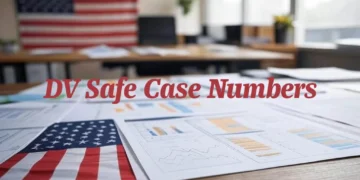Welcome, DV Lottery applicants and enthusiasts! Winning the Diversity Visa (DV) Lottery – also known as the Green Card Lottery – is exciting, but it’s important to remember that selection is just the beginning. Unfortunately, not all selectees end up with a visa. Many encounter rejections or delays due to avoidable mistakes, eligibility issues, or processing problems. In this guide, we’ll walk you through common DV Lottery rejection reasons, including application errors, document issues, eligibility problems, and fraud-related disqualifications. We’ll also explain how the visa bulletin case number cutoffs work and why sometimes a selectee’s case number is current but they have not received the Second Notification Letter (2NL) for their interview. Most importantly, we’ll provide steps to take in those situations and expert tips to improve your chances. So grab a cup of coffee, and let’s dive in!
Common Reasons for DV Lottery Rejection or Visa Denial
Being selected in the DV Lottery does not guarantee you a visa, as you must still meet all requirements and avoid pitfalls. Here are the most frequent reasons DV applicants get disqualified or denied, and how to avoid them:
1. Multiple Entries (Duplicate Submission)
The Pitfall:
Submitting more than one entry in the DV Lottery registration period. The DV program strictly allows only one entry per person per year. The Department of State uses technology to catch duplicates, and anyone with multiple entries is automatically disqualified. In fact, even if a family member or agent submits an extra entry on your behalf, it counts as a duplicate.
How to Avoid It:
- Submit only one entry for yourself.
- If married, you and your spouse can each submit an entry (listing the other as derivative), but you cannot submit two entries as the principal applicant.
- Be wary of visa agents who might send duplicate entries – if you are entered more than once, all your entries will be rejected.
- Stick to the official application and never try to game the system by applying multiple times.
2. Invalid or Incorrect Photographs
The Pitfall:
Submitting a photo that does not meet the DV Lottery requirements. The photo rules are very strict – wrong background, size, or an old photo can doom your entry. In fact, using a photo older than 6 months or one that was used in a previous DV entry will get your entry disqualified. The U.S. government also disqualifies photos that are manipulated or don’t meet the technical specs. This is one of the most common reasons DV applications get rejected.
How to Avoid It:
- Follow the official photo guidelines carefully.
- Use a recent (taken within 6 months) color photo with a plain white or off-white background, proper size (2×2 inch with correct head proportions), neutral expression, and no eyeglasses or headwear (except religious attire).
- Review a detailed resource like our DV Lottery Photo Requirements guide for a checklist of all specs (see our post “DV Lottery Photo Requirements 2027: Your Complete Guide to Taking the Perfect Photo” for tips).
- Ensuring your photo meets all criteria eliminates a major cause of disqualification.
3. Failure to List All Eligible Family Members
The Pitfall:
Not including a spouse or all eligible children on your original DV entry. DV Lottery rules require you to list your legal spouse (if married) and all unmarried children under 21 (biological, legally adopted, and step-children) on your entry, even if they don’t plan to immigrate with you. Failing to list an eligible spouse or child is grounds for mandatory disqualification of your case at the interview. Likewise, listing someone who is not your real spouse or child (for example, claiming a friend’s child as yours) will result in denial for fraud.
How to Avoid It:
- List every required family member on the initial entry.
- Double-check this section of the form before you submit.
- Remember that even if you are separated from your spouse (but not legally divorced) you must list them.
- The only exceptions are if a spouse or child is already a U.S. citizen or Permanent Resident – you don’t list those, and it won’t hurt your entry.
- Omitting your spouse or kids will get your visa refused when you show up to the interview.
- If you get selected but realize you made this mistake, sadly there is no fix – the consulate will refuse the visa in such cases.
- Honesty and accuracy at the entry stage are important.
4. Not Meeting the Education or Work Experience Requirement
The Pitfall:
Not possessing the required level of education or work experience to qualify for the Diversity Visa. Under U.S. law, the principal DV applicant must have at least a high school education or its equivalent, OR two years of qualifying work experience in the last five years. If you don’t meet one of these criteria, you are not eligible for a DV immigrant visa, even if you were selected.
How to Avoid It:
- Ensure you qualify before pursuing the DV application.
- A high school education means completion of a formal secondary education equivalent to a 12-year U.S. high school.
- If you lack the education, check if your occupation is considered skilled: it must be classified in Job Zone 4 or 5 with SVP 7.0+ according to U.S. Department of Labor O*Net definitions.
- If you cannot firmly meet either the education or work experience requirement, the consular officer will refuse your visa for ineligibility.
- It’s better not to pursue the DV process (and save the fees) if you know you don’t qualify.
- If you do qualify, bring original proof (diplomas, transcripts, work letters) to the interview.
5. Incomplete or Inaccurate Application Information
The Pitfall:
Mistakes or missing information on your forms – whether on the initial entry or the DS-260 visa application – can lead to problems. For example, significant typos or inconsistencies (like a date of birth not matching your passport, or a misspelled name) might cause delays or even denial if it raises suspicions. Failure to provide all required info on the entry will result in mandatory disqualification. Similarly, forgetting to sign and submit the DS-260 or not answering all questions can halt your case.
How to Avoid It:
- Double-check all forms for accuracy and completeness.
- Ensure every field is filled correctly – from your name and birth date to your passport number and contact info.
- Even one missing field or wrong detail (like country of eligibility) can ruin your chance.
- On the DS-260, review each section before submission.
- It helps to have your documents (passport, birth certificate, etc.) in front of you to copy the data exactly.
- If you realize after submission that something is wrong, contact KCC to unlock your DS-260 and correct it.
- Consular officers appreciate consistency – if the information on your entry, DS-260, and documents all match, your interview will go more smoothly.
6. Missing or Insufficient Supporting Documents
The Pitfall:
Not providing all necessary documents at your visa interview (or when asked by KCC prior to scheduling). Missing documents – such as a birth certificate, police certificate, marriage or divorce certificate, or passport – can lead to a temporary refusal under Section 221(g) (administrative refusal) and delay your case. If you cannot produce the required document in time, it could become a permanent refusal.
How to Avoid It:
- Prepare all your documents well in advance.
- As soon as you get selected, review the official document list for DV applicants (the U.S. Embassy website for your country often lists the required civil documents and translations).
- Gather originals or certified copies of your birth certificate, marriage certificate, police clearances, court and military records if applicable, etc.
- It’s wise to scan and email required documents to KCC if the program instructions request it.
- At the interview, have organized copies ready for the officer.
- Use our checklist from the “Diversity Visa (DV) 2NL and Interview Process Guide” to ensure you’ve got everything in order.
7. Inadmissibility (Criminal, Medical, or Security Grounds)
The Pitfall:
Ineligibility under U.S. immigration law for reasons unrelated to the lottery itself. All DV winners go through the same vetting as any immigrant visa applicant. This means if you have a serious criminal record, security issue, or other inadmissibility (e.g., certain immigration violations, prior fraud, or a communicable disease without a waiver), the consular officer must deny the visa.
How to Avoid It:
- Unfortunately, there’s no simple fix if you fall under a ground of inadmissibility – each case is different.
- If you have a potential issue in your background, research U.S. visa inadmissibility laws (INA Section 212) and consider consulting an immigration attorney before your interview.
- In some cases, waivers exist for certain inadmissibilities, but they may not be approved before the DV program deadline (September 30).
- Always be fully honest on your DS-260 and at the interview – disclose everything asked.
- Hiding information will only worsen your situation and could lead to a permanent bar.
8. Fraud or Misrepresentation
The Pitfall:
Attempting to cheat the system or provide false information at any stage. This includes entering fake information or documents in your lottery entry or visa application, entering a sham marriage just to get a visa, or letting unscrupulous agents alter your data. Such actions can not only cause denial but can bar you from ever going to the U.S. for life if discovered.
How to Avoid It:
- Be honest and follow the rules.
- Do not be tempted by visa “consultants” who offer to improve your chances by tweaking your information – adding a fake qualification or lying about family members will ruin your case.
- The U.S. government has zero tolerance for fraud.
- If your situation changes (e.g., you got married after the lottery entry), bring evidence of a bona fide relationship.
- If you used a lawyer or agent, review every detail yourself.
- Stay vigilant about scams – no legitimate authority will ever ask you to pay money for the DV Lottery win via email.
- Remember, all fees are paid in-person at the U.S. Embassy on the day of your interview.
9. Missing the Interview Appointment
The Pitfall:
Not appearing for your scheduled visa interview (or arriving unprepared). If you receive your 2NL (appointment letter) but fail to attend the interview, it’s treated very seriously. In many cases, if you no-show without prior notice, your DV case could be closed. Also, arriving without key documents (like your passport or medical results) might force the consulate to postpone or temporarily refuse your case.
How to Avoid It:
- Treat your interview like a do-or-die appointment.
- Once scheduled, note the date, time, and location immediately – do not miss it.
- If an extreme emergency arises (serious illness, etc.), contact the U.S. Embassy before the interview date to ask if a reschedule is possible.
- Arrive prepared with all required documents and ensure all family members are present.
- Punctuality and preparation are key to avoiding complications.
10. Administrative Processing Delays and Time Limits
The Pitfall:
Getting stuck in administrative processing or other delays until time runs out. The DV Lottery is unique because of its strict time frame: all visas must be issued by September 30th of the program’s fiscal year, or they are lost. Delays, such as a prolonged security name check or a 221(g) document delay, can cost you your chance if unresolved by September 30. Additionally, each country/region has a limited number of visas; if you wait too long to complete your process, visas might run out even if your number was current.
How to Avoid It:
- Act quickly and stay on top of your case.
- Submit your DS-260 immigrant visa application promptly once selected.
- Follow any instructions from KCC about sending documents without delay.
- If your case enters administrative processing, check your case status regularly and respond swiftly to any requests.
- Ensure all processing, including medical exams and document submissions, is completed by September 30.
Understanding Case Number Cutoffs and the Visa Bulletin
Before discussing missing 2NLs, it’s important to understand how case number cutoffs and the Visa Bulletin work:
- Case Number: When you win the DV Lottery, you’re assigned a case number (e.g., 2025AF00001234). This number determines when you become eligible for an interview based on the monthly allocation of visas.
- Visa Bulletin: A monthly publication that announces which case numbers are current (eligible for scheduling) for the upcoming month’s interviews. For example, if the bulletin says “AF region current up to 20,000 for May,” then all Africa region selectees with case numbers ≤20,000 should be assigned interview dates in May.
- Scheduling:
- Having a case number below the cutoff means you’re eligible for scheduling, provided you have completed all necessary steps (DS-260 submission, document submission, etc.).
- Interviews are scheduled approximately 1–2 months in advance. KCC sends out 2NLs (interview appointment notices) in the middle of the month for interviews about six weeks later.
- Visa Availability: Each region has a limited allotment of visas. Even if your case number is current, you will only be scheduled if a visa number is available.
- Absolute Cutoff: All processing must conclude by September 30 of the DV program’s fiscal year (e.g., DV-2025 visas are issued between October 1, 2024 and September 30, 2025). There is no extension beyond this date.
Why Some Selected Applicants Don’t Receive the 2NL (Yet)
It can be puzzling and stressful to see your case number as current in the Visa Bulletin, yet find no interview scheduled on the Entrant Status Check. Here are some common reasons:
- Late DS-260 Submission:
If you submitted your DS-260 late, KCC might not have finished processing your forms when your number became current. This may result in scheduling for a later month. - Incomplete Document Submission:
In some cycles, KCC required selectees to email scans of supporting documents after submitting the DS-260. Missing or incomplete document submissions can delay scheduling. - Embassy Capacity Issues:
The U.S. Embassy may have limited DV interview slots per month. An overload at the embassy can delay scheduling even if your case is current. - Administrative Hold or Additional Review:
Issues such as a change of interview location request or a potential fraud flag may delay your scheduling until further review is completed. - Email or Notification Issues:
Your 2NL notification is sent by email. It might land in your spam folder or be missed, so always check the official Entrant Status Check website for updates. - Region Marked “Current”:
If your region is “Current” (no numerical cutoff) and you still have no interview, the delay may be due to processing or scheduling issues as described above.
What to Do If Your Case Is Current but No 2NL Arrives
If you find yourself waiting for your Second Notification Letter while others are receiving theirs, follow these steps:
Step 1: Log into Entrant Status Check (ESC) Directly
- Action: Don’t wait for an email—check the official DV Lottery Entrant Status Check website with your confirmation details. Your 2NL might already be posted there.
Step 2: Review Your DS-260 Submission
- Action: Verify that your DS-260 was submitted and is complete. If it was submitted recently, processing may take several weeks. Late submissions may result in scheduling for a later batch.
Step 3: Confirm if Document Submission Is Required
- Action:
- Check for any emails from KCC regarding the need to submit supporting documents (e.g., passport bio page, birth certificate).
- If requested, gather and send the required scans in the exact format specified.
- If you already sent documents but haven’t received confirmation, follow up with KCC.
Step 4: Contact KCC for a Status Update
- Action:
- Email KCC at kccdv@state.gov with your case number, full name, and birth date.
- Politely inquire if any additional information or documents are needed.
- KCC may indicate if your case is “documentarily qualified” or still processing.
Step 5: Consider the Embassy’s Situation
- Action:
- Understand that delays might be due to limited interview slots at your local U.S. Embassy.
- In late stages (August or September), if still unscheduled despite being current, you might consider contacting the embassy only as a last resort.
Step 6: Keep an Eye on the Visa Bulletin Updates
- Action:
- Monitor monthly Visa Bulletin updates for any changes.
- Stay informed about your region’s visa allotment and cutoffs.
Step 7: Be Ready to Act Fast
- Action:
- Once your 2NL arrives, prepare all documents and schedule your medical exam promptly.
- Ensure that every step is completed before the September 30 deadline.
Step 8: Stay Calm and Persistent
- Action:
- Understand that delays can be resolved in the next scheduling batch.
- Remain proactive by checking official channels and follow up if necessary.
Frequently Asked Questions (FAQs)
Q: I was selected in the DV Lottery – does that guarantee I will get a visa?
A: No, being selected only means you can apply for a visa. You must still meet all eligibility requirements (education/work, admissibility, etc.) and successfully complete the visa interview process. Approximately 100,000 people are selected each year for only 55,000 visas, so multiple factors determine who receives the green card.
Q: Will previous visa denials or U.S. immigration issues affect my DV Lottery case?
A: They can. Every immigration visa applicant is checked for inadmissibilities. For example, a previous denial for fraud or an active ban will likely affect your DV case. A prior tourist visa denial does not automatically disqualify you—it depends on the reason. Always be honest on the DS-260.
Q: I forgot to list my spouse/child on the entry, or I listed the wrong person. What now?
A: The rules are clear: failing to include an eligible spouse or child on your initial entry results in disqualification and visa refusal. There is no waiver for this mistake. The consulate will compare your entry to your current family situation, and any discrepancy will lead to a denial at the interview. If this happens, you must try the lottery again next year and ensure all family details are correctly listed.
Q: What if I got married or had a new baby after the DV Lottery entry – can I include them?
A: Yes, as long as the change is genuine. You must list your new spouse or newborn on the DS-260 and inform KCC/consulate. You’ll need to prove the relationship (with a marriage certificate, photos, etc.) during the interview. Promptly update the consulate before the interview to avoid surprises.
Q: I’m from a country that became newly ineligible this year (or I listed the wrong country on entry). Will I be disqualified?
A: Your eligibility is based on your country of birth at the time of entry. If you entered the lottery claiming a country of chargeability that isn’t actually yours, the consulate may disqualify your case. If it was a harmless error and your true country is eligible, you may be okay—but if you claimed eligibility through a spouse or parent, you must prove that relationship.
Q: Do I need to hire an attorney or agent to help with my DV case?
A: For most people, the DV process can be completed by carefully following the instructions on official websites. However, if you have a complicated situation (inadmissibility issues, derivative family questions, etc.), a qualified immigration attorney can provide guidance. Be cautious with visa agents, as many have provided bad advice or engaged in fraudulent practices.
Q: My case number is current now. How long until I get my 2NL?
A: Typically, if your number is in the current range and your DS-260 is processed (with all documents complete), KCC will send your 2NL by the middle of the month prior to your interview month. If several Visa Bulletin cycles pass without a 2NL, refer to the steps above and follow up with KCC.
Q: The Visa Bulletin says my region is “Current.” Does that mean I will definitely get an interview?
A: “Current” means there is no numerical cutoff. This is a positive sign, as it indicates visa numbers have not run out. However, you must still have submitted your DS-260 and completed document processing. A “Current” status removes the number barrier but does not guarantee scheduling if processing or capacity issues persist.
Q: My visa was refused. Can I appeal or use the lottery selection in some other way?
A: Unfortunately, no. DV Lottery visas cannot be appealed or deferred to another category. If a consular officer denies your DV visa due to ineligibility or disqualifying mistakes, the case is closed. You can try the lottery again in the future or explore other immigration pathways. Note that visa fees are non-refundable even if the visa is refused.
Q: If I get my visa, what’s next?
A: Once approved, you will receive an immigrant visa stamped in your passport, valid for 6 months from your medical exam date. You’ll then pay an USCIS immigrant fee and travel to the U.S. before the visa expires. Upon entry, you become a permanent resident (green card holder), and your green card will be mailed to the U.S. address you provided. For more details on what to do after winning, see our post “Green Card After Winning: What to Do Once You Arrive in the U.S.”
Final Thoughts
We know this was a long read, but we hope it sheds light on every aspect of DV Lottery rejection and the mysterious missing 2NL scenario. To recap, the DV Lottery process has many steps where things can go wrong – from entry errors and eligibility shortcomings to interview mistakes and processing delays. The good news is that most of these pitfalls are avoidable with careful preparation and by following official guidelines.
Always rely on official U.S. government sources (like the U.S. Department of State’s DV Program website) for accurate information, and don’t hesitate to seek expert advice if you’re unsure. We warmly encourage you to stay persistent and positive – many in the DV community have faced setbacks, only to succeed later.
By understanding the common reasons for DV Lottery rejections and taking proactive steps, you’ll give yourself the best shot at that coveted visa. And if you’re current but waiting for your interview, hang in there and use the tips above to navigate the situation. We’re rooting for you!
Good luck on your DV journey, and we hope to hear success stories from you soon. If you found this guide helpful, feel free to explore other posts on our blog for more insights and share this with fellow lottery selectees. Welcome to the DV Lottery community, and here’s to making your American Dream a reality!
Happy DV Lottery Journey!








